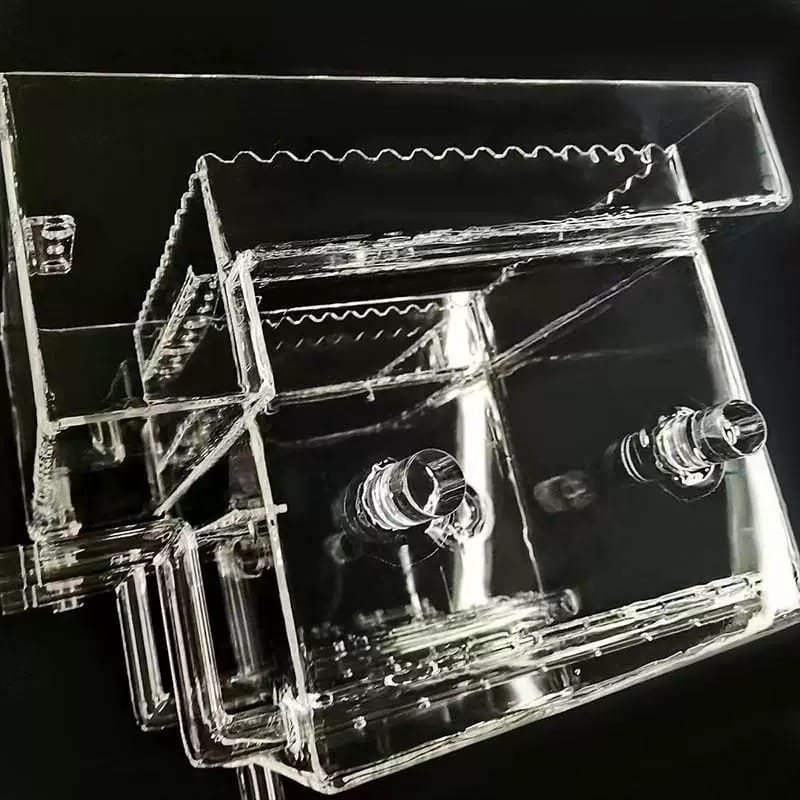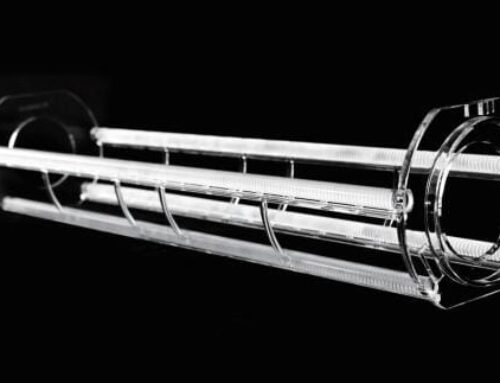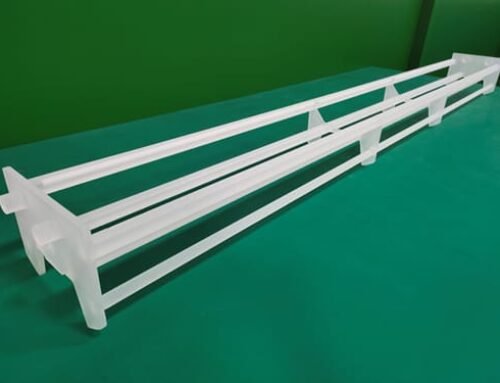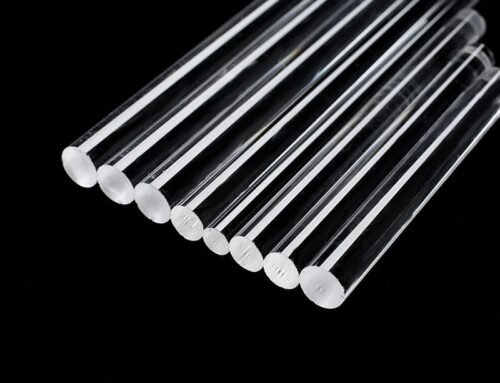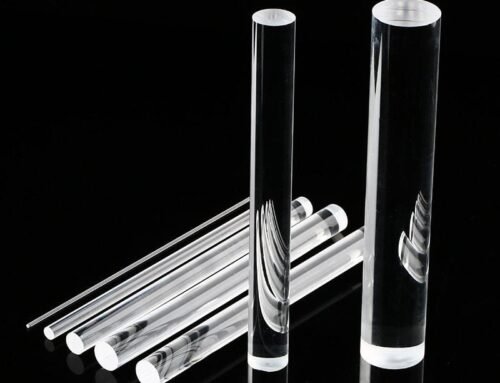Introduction to Quartz Cleaning Tanks
Quartz cleaning tanks have gained considerable importance across various industries, serving essential roles in semiconductor manufacturing and laboratory environments. The increasing demand for electronic components and the rigorous standards of cleanliness required in laboratories make these tanks particularly valuable. Their unique properties contribute to their effectiveness in maintaining the integrity of sensitive materials and ensuring operational efficiency.
One of the primary attributes of quartz is its exceptional resistance to a range of chemicals, including hydrofluoric (HF) and hydrochloric (HCl) acids. This chemical resilience enables quartz cleaning tanks to withstand harsh cleaning processes that are commonplace in semiconductor fabrication, where precision and purity are critical. The durability of quartz also plays a significant role in prolonging the lifespan of the equipment. Unlike other materials, quartz does not easily wear down or corrode, making it an economically viable choice in terms of both maintenance and replacement costs.
Additionally, the thermal stability of quartz is noteworthy: it can handle considerable temperature variations without distortion or degradation. This characteristic is particularly advantageous when subjected to high-temperature cleaning processes. Notably, quartz cleaning tanks exhibit minimal expansion and contraction with temperature changes, thereby maintaining structural integrity during operation.
The applications of quartz cleaning tanks extend beyond the semiconductor industry. They are utilized in laboratories for cleaning delicate glassware, conducting chemical experiments, and in various electronic manufacturing processes. The reliability and efficiency of these tanks underscore their essential role in settings where cleanliness is paramount. As industries continue to evolve, the significance of quartz cleaning tanks is likely to remain relevant, driven by the need for stringent cleanliness and precise material handling.
The Importance of Acid Resistance
In various industrial and laboratory environments, cleaning processes often involve the use of strong acids, particularly hydrofluoric acid (HF) and hydrochloric acid (HCl). The implementation of cleaning tanks that exhibit acid resistance is paramount for ensuring both operational efficiency and safety. Acid resistance in cleaning tanks is critical because these acids are renowned for their effective removal of a range of contaminants, including minerals, metals, and organic residues. However, their aggressive nature poses a risk to materials that lack adequate resistance, leading to potential failure and operational downtime.
Hydrofluoric acid is particularly notorious for its ability to corrode conventional materials, which makes the use of acid-resistant tanks essential in any application involving this substance. If a cleaning tank fails due to corrosion, not only does it necessitate expensive repairs or replacements, but it also poses severe safety hazards to personnel working in proximity. Hydrochloric acid, while slightly less hazardous, can still cause significant damage to inadequate tank materials over time. The repercussions of such failures can extend beyond immediate safety concerns; they can adversely affect the overall efficiency of cleaning processes, leading to prolonged downtime and increased operational costs.
Furthermore, the choice of cleaning tanks that can withstand these harsh environments—particularly those constructed from quartz or similar materials—ensures a high degree of safety and reliability. By investing in tanks that are resistant to both HF and HCl acids, industries not only comply with safety regulations but also enhance their operational workflows. This reliability fosters greater confidence in the cleaning process, leading to improved outcomes and reduced risks of contamination or equipment damage. Ultimately, the significance of acid resistance in cleaning tanks cannot be overstated, as it directly impacts safety, operational efficiency, and the longevity of equipment.
Understanding HF and HCl Acids
Hydrofluoric acid (HF) and hydrochloric acid (HCl) are two notable strong acids widely utilized in various industrial applications. Hydrofluoric acid is a colorless, corrosive liquid made from hydrogen fluoride dissolved in water. One of its key characteristics is its ability to dissolve glass and various metals, which presents specific hazards when working with this compound. Hydrofluoric acid is commonly employed in processes such as etching and cleaning metals, particularly in semiconductor and manufacturing industries. Its unique properties enable it to penetrate biological tissues, making it extremely dangerous in cases of exposure, necessitating stringent handling protocols.
On the other hand, hydrochloric acid is a solution of hydrogen chloride in water and is one of the fundamental chemicals produced in industrial settings. It is known for its strong corrosive nature and is often used for pH adjustments, pickling of metals, and in the production of various chemical compounds. HCl also plays an essential role in cleaning applications, especially in removing rust and scale from metal surfaces. However, like HF, HCl also requires careful handling due to its ability to cause severe skin and respiratory irritation upon contact or inhalation.
Given the aggressive nature of hydrofluoric and hydrochloric acids, it is crucial to utilize materials specifically engineered to withstand their corrosive effects in cleaning tanks and equipment. Conventional materials may fail under such harsh conditions, leading to potential leaks, equipment failures, and significant safety hazards. Therefore, quartz cleaning tanks that are resistant to HF and HCl are designed to ensure the integrity of the containment. Such specialized equipment not only enhances safety but also promotes efficiency in cleaning processes across various applications, making them an invaluable asset in environments where these acids are used.
Material Composition of Quartz Cleaning Tanks
Quartz cleaning tanks are engineered from high-purity quartz, a mineral renowned for its crystal structure and inherent chemical resilience. The principal component of these tanks is silicon dioxide (SiO2), which serves as the foundation for their robust performance. Unlike many alternative materials, quartz exhibits exceptional resistance to aggressive acids such as hydrofluoric (HF) and hydrochloric (HCl) acid. This extraordinary characteristic arises from quartz’s unique crystalline lattice, which creates strong covalent bonds between silicon and oxygen atoms, effectively preventing chemical degradation in harsh environments.
The purity of the quartz used plays a critical role in the performance of cleaning tanks. High-purity quartz has fewer impurities, which contributes to its superior acid resistance and durability. During the manufacturing process, certain techniques are employed to enhance purity levels further. Methods such as washing, sieving, and selective lithification aim to eliminate contaminants and ensure that the final product is primarily composed of quartz. The absence of metals and other foreign materials minimizes the risk of leaching or chemical reactions with cleaning agents, thereby prolonging the life of the cleaning tank.
The manufacturing processes also significantly influence the structural integrity of quartz cleaning tanks. Techniques like controlled cooling and high-temperature processing are utilized to enhance the thermal stability and mechanical strength of the material. These methods ensure that the tanks can withstand not only chemical exposure but also the thermal stresses that can occur during cleaning cycles. Consequently, quartz cleaning tanks fabricated under stringent quality controls are highly effective and resilient in environments where acidic substances are commonly utilized.
Advantages of Using Quartz Cleaning Tanks
Quartz cleaning tanks offer numerous advantages that make them an optimal choice for various industrial applications, particularly in environments where exposure to harsh chemicals is a concern. One of the most significant benefits of quartz tanks is their superior chemical resistance, specifically against hydrofluoric acid (HF) and hydrochloric acid (HCl). Unlike other materials such as glass or plastics, quartz does not degrade when exposed to these corrosive substances, ensuring the integrity of the tank and the safety of the cleaning process.
In addition to their chemical resilience, quartz cleaning tanks also boast impressive longevity. When properly maintained, quartz can endure extreme conditions without succumbing to wear and tear. This durability means fewer replacements over time, making quartz tanks a wise long-term investment. Industries that rely on frequent cleaning of surfaces or equipment benefit greatly from this durability, as the reduced frequency of tank replacement directly correlates with operational efficiency.
Cost-effectiveness emerges as another compelling advantage of utilizing quartz cleaning tanks. While the initial setup costs may be higher than those for other materials, the long-term savings attributed to a longer lifespan and reduced maintenance costs can surpass initial expenditures. Users of quartz tanks often report lower downtime for repairs and replacements, which translates to a more productive workflow. This economic advantage should not be overlooked, especially considering the critical balance between safety, efficiency, and budget constraints in industrial settings.
The reduction in maintenance required when utilizing quartz cleaning tanks further enhances their appeal. Their non-reactive nature means fewer wear-related issues, leading to less frequent inspections and upkeep. By minimizing the risk of leaks or chemical reactions, quartz tanks contribute to maintaining a safe working environment. Overall, the advantages presented by quartz cleaning tanks substantiate the rationale for their adoption in industries with stringent chemical processing requirements.
Applications of Quartz Cleaning Tanks
Quartz cleaning tanks have gained prominence across various industries primarily due to their exceptional resistance to harsh chemicals such as hydrofluoric (HF) and hydrochloric (HCl) acids. These tanks are crucial in sectors where maintaining impeccable cleanliness and quality is non-negotiable. One of the most significant applications of quartz cleaning tanks is in the semiconductor fabrication industry. In this sector, the silicon wafers used in electronic devices must undergo rigorous cleaning processes to remove contaminants. The inherent properties of quartz, which withstand aggressive cleaning agents, make these tanks ideal for use in high-purity environments.
Additionally, quartz cleaning tanks are pivotal in solar panel production. The manufacturing of photovoltaic cells requires the removal of impurities and particulates from the surfaces of the materials involved. The use of quartz cleaning tanks allows for the effective and safe cleaning of these sensitive components, ensuring that the solar panels maintain their efficiency and longevity. The ability to resist corrosion and degradation when exposed to chemical cleaning agents further enhances their utility in this sector.
Another critical application of quartz cleaning tanks is within cleanroom environments found in laboratories and medical facilities. In settings where even the slightest contamination can result in significant complications, quartz tanks are utilized for the decontamination of laboratory tools and equipment. Their compatibility with various cleaning solutions ensures that they can effectively meet the stringent cleanliness standards required in these environments. As industries continue to evolve, the role of quartz cleaning tanks remains vital, making them indispensable in applications where purity and precision are paramount.
Best Practices for Maintaining Quartz Cleaning Tanks
Maintaining quartz cleaning tanks that are resistant to HF and HCl acids is crucial for optimal performance and longevity. Implementing best practices in maintenance can significantly reduce the risk of contamination and enhance the efficiency of these specialized tanks. Proper cleaning protocols should be established to ensure the tanks are kept in pristine condition. It is essential to avoid using abrasive cleaners or tools that could scratch the quartz surface, as such damage may compromise the tank’s integrity.
Routine inspections play a critical role in the maintenance of quartz cleaning tanks. Operators should conduct visual checks for any signs of wear, including scratches, cracks, or discoloration. Additionally, monitoring for leaks around fittings and seals can prevent issues before they escalate. It is advisable to create a regular inspection schedule, which may include temperature and pressure checks during the operational phases, ensuring the tanks function properly under various conditions.
When handling HF and HCl acids, it is paramount to follow strict guidelines to ensure safety and tank longevity. Protective gear, such as gloves and goggles, should always be worn when working with these substances. Moreover, operators must be trained in the proper techniques for transferring acids to avoid spills that could not only damage the quartz but also pose safety hazards. Utilizing acid-resistant containers for transfer and storage is also recommended to minimize risks.
Furthermore, proper ventilation in the workspace cannot be overstated. Ensuring that quartz cleaning tanks are placed in well-ventilated areas helps to dissipate any fumes produced during cleaning processes. By adhering to these best practices, users can maximize the lifespan and performance of their quartz cleaning tanks, ultimately leading to more effective operations in environments where HF and HCl acids are employed.
Comparing Quartz Cleaning Tanks with Other Materials
When evaluating cleaning tanks for applications that involve corrosive substances such as hydrofluoric (HF) and hydrochloric (HCl) acids, quartz cleaning tanks emerge as a superior alternative compared to other materials, notably glass and plastic. Each material offers distinct advantages and disadvantages that can significantly impact long-term operational efficiency and safety in various laboratory settings.
Quartz cleaning tanks are renowned for their high resistance to corrosive chemicals and extreme temperatures, allowing them to maintain structural integrity under harsh conditions. This makes quartz an ideal choice for applications involving HF and HCl, where other materials may experience degradation. Glass tanks, while resistant to many acids, can crack or shatter under thermal stress, posing safety risks. Additionally, glass’s susceptibility to impact damage limits its utility in high-traffic environments. In contrast, quartz provides a more robust option that withstands mechanical stress more effectively.
Plastic tanks, such as those made from polyethylene or polypropylene, offer lightweight flexibility and are generally less expensive. However, they often lack the chemical resistance of quartz, especially when exposed to strong acids. Over time, plastic materials may suffer from stress cracking and chemical leaching, compromising the purity of the contents. Therefore, while they may serve well for less aggressive applications, they are not well-suited for environments dealing with HF and HCl.
In terms of performance metrics, quartz cleaning tanks excel in chemical resistance, durability, and thermal stability. When considering factors such as lifespan, safety, and maintenance costs, quartz cleaning tanks often provide a more reliable and effective option. Ultimately, the choice between quartz, glass, and plastic should be guided by the specific requirements of the application, emphasizing the need for careful analysis and consideration of material properties to ensure optimal performance and safety.
Future Trends in Quartz Cleaning Tank Technology
As industries increasingly adopt quartz cleaning tanks resistant to HF and HCl acids, several innovative trends are emerging that will shape the future of this technology. One primary focus in research and development is enhancing the acid resistance of quartz materials. Scientists and engineers are exploring advanced coating techniques and composite materials that can significantly improve the durability and lifespan of cleaning tanks. These innovations aim to mitigate the degradation caused by corrosive substances, ensuring that cleaning tanks maintain their functionality in demanding environments.
Another critical area of development is the sustainability of materials used in quartz cleaning tanks. As businesses strive to reduce their environmental footprint, there is a growing emphasis on using eco-friendly materials that do not compromise performance. Researchers are investigating bio-based resins and other sustainable alternatives, which not only function effectively in harsh chemical conditions but also contribute to circular economy principles, promoting recycling and reducing waste.
Moreover, the incorporation of smart technology into quartz cleaning tank solutions is gaining momentum. The integration of Internet of Things (IoT) devices allows for real-time monitoring of cleaning processes, providing valuable data on efficiency and performance. This connectivity fosters more automated operations, enabling predictive maintenance and decreasing downtime. For instance, sensors can detect when cleaning agents are depleted or when temperatures deviate from ideal conditions, allowing for timely interventions that optimize cleaning efficacy.
Additionally, software solutions that analyze the collected data can suggest best practices for cleaning cycles, significantly enhancing productivity. As quartz cleaning tank technology continues to evolve, these advancements will not only improve operational effectiveness but also foster a more adaptable and responsive approach to cleaning processes in various industries.
